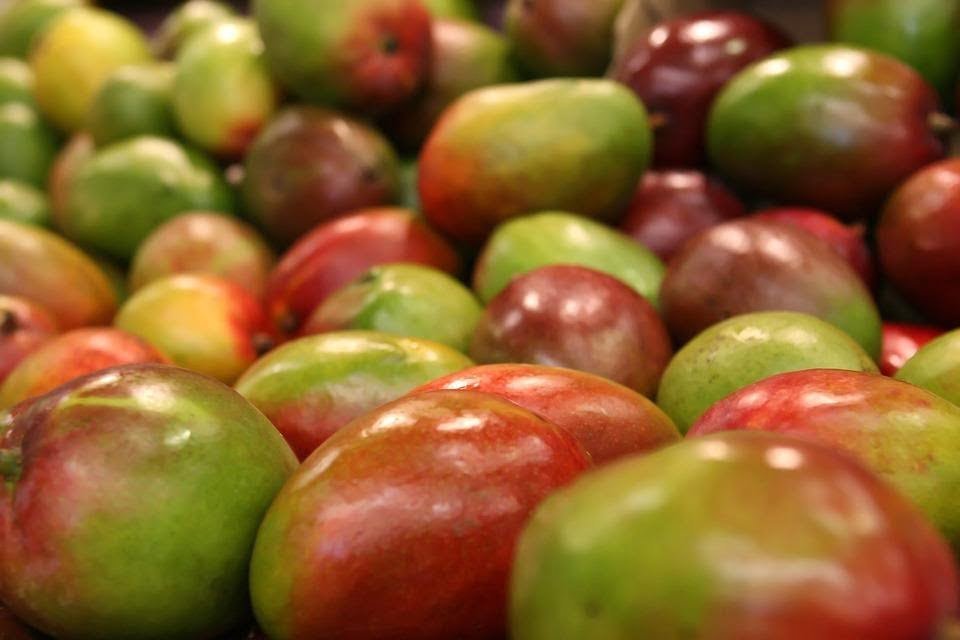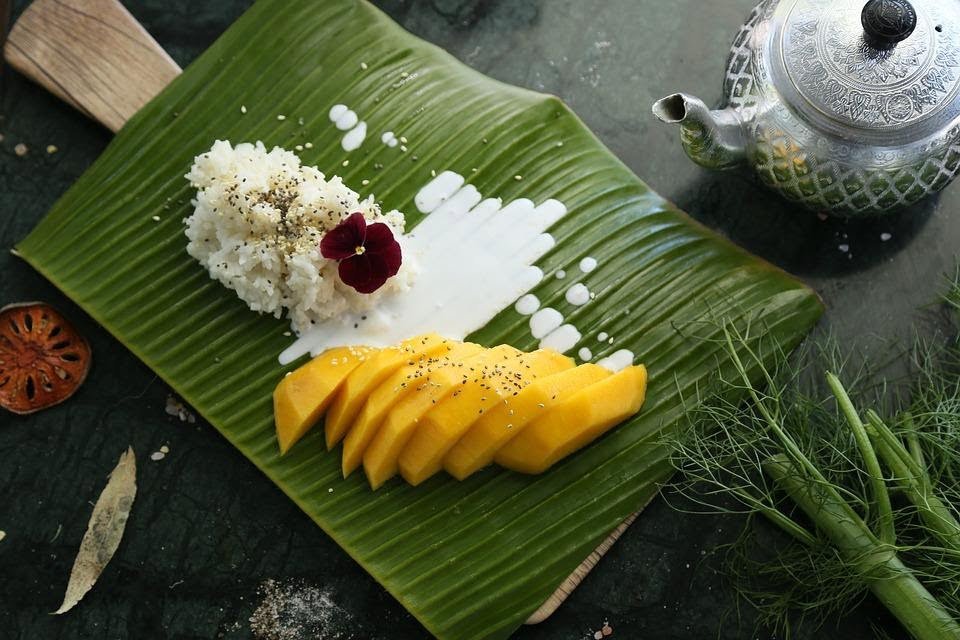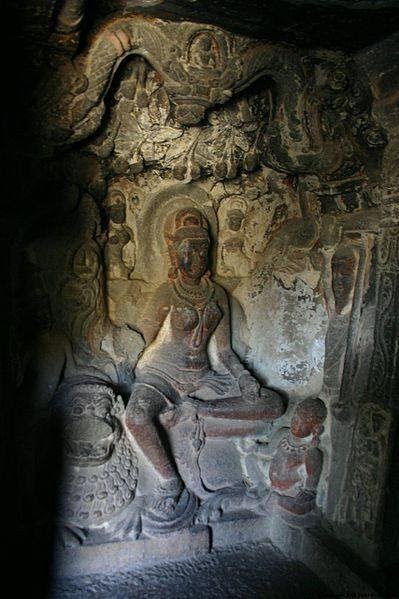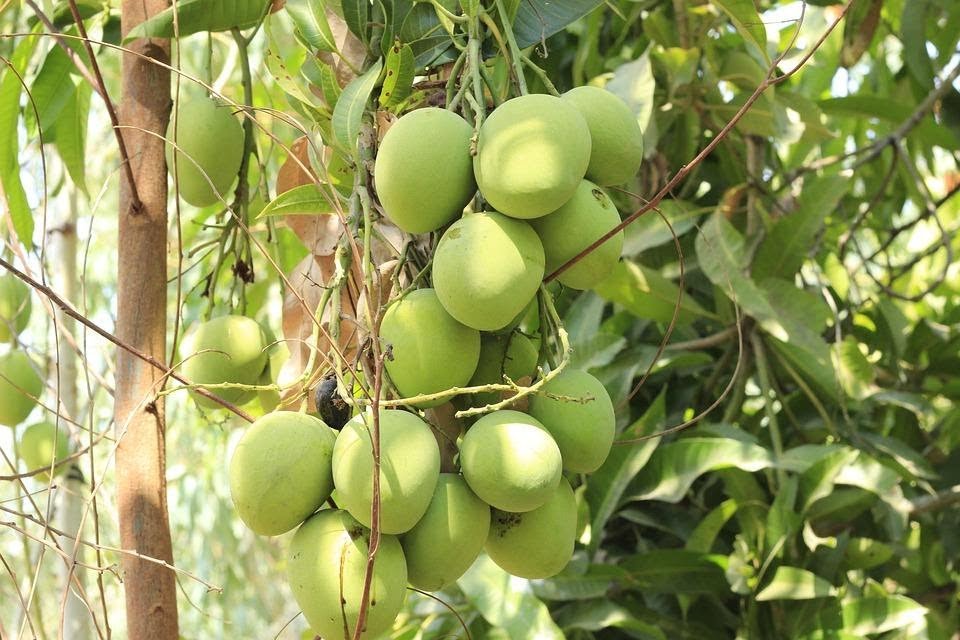The national fruit of India is Mango, is amazingly diverse in its varieties and applications. Probably no other fruit of India possesses so many usages. The fruit justifies its names – “Fruit of the Gods”, “King of the fruits”, or “Apple of the Tropic” – in every letter and spirit.
In India, mango is more than a fruit. The origin of mango is so ancient that today mango is an innate part of Indian culture. In India, one cannot imagine spending a year without relishing mango in any of its forms. Nor do they perform an auspicious ceremony without its leaves.
As we move on in this elaborate article on this national fruit of India, let us dive deep into:
the history of mango, why mango is the national fruit of India, why we love national fruit mango, the varieties of mango and the origin of mango.
About National Fruit Mango Origin
India is the birthplace of Mango. This national fruit of India has been in cultivation for ages. The history of mango dates back to more than 4000 to 6000 years in this sub-continent. The fruit finds its mention in many scriptures and historic records written by various travelers who visited India.
Mango is a tropical fruit. However, now it is widely grown in many countries. Mango belongs to the genus Mangifera. Indian mango is called Mangifera Indica. The meaning of the term Mangifera Indica is the great fruit bearer!
According to researchers, the origin of mango is found first in the Assam-Burma region. The wild variety of mangoes are first found at the foothills of the Himalayas.
Studies done by Birbal Shani Institute of Palaeobotany, Lucknow, found the origin of genus Mangifera from 60 million years old fossil compressions of carbonized mango leaves in the Palaeocene sediments near Damalgiri, West Garo Hills, and Meghalaya.
How did the name Mango originate?
It was the Portuguese who started the mango trade with India. They were deeply captivated by the charm of the national fruit of India. They called it manga, a word derived from the mix of Tamil word maam-kay and Malayalam word manga. Gradually, this manga turned into mango!
History of Mango: How the world came to know about Mango?
The national fruit of India Mango has a dep rooted and interesting history. The travelers who visited India fell in love with the exotic taste of this fruit and carried them to their native countries. Hsüan-Tsang, the famous Chinese traveler, is supposedly the first person to introduce mango to the rest of the world.
According to researchers, the history of mango and the origin of mango has many interesting tales:
- The Buddhist monks carried this delicious fruit to Malaya Peninsula and East Asia during the 4-5th centuries B.C
- Chinese tasted the mangoes first during the 7th century AD where it was introduced by Indians.
- The Portuguese who landed in Kolkata in 1498 were the first to establish a mango trade.
- This national fruit of India reached the Philippines and SouthEast Asia in the 15th century.
- Later in the 16th, 17th and the end of the 19th century, mango landed in Africa, Brazil, and America respectively.
- Records say that the Moroccan traveler Ibn Battuta introduced Mango in Mogadishu during the 14th century. Spanish travelers carried mango to South America and Mexico in the 1600s.
- Mango stepped in Florida around 1833. But it was only after the second half of the 19th century that the cultivation of the fruit stepped up to the level of mass production. This was because mango grows easily in a tropical climate which was not feasible in North America.

History of Mango: Interesting facts about Mango from Indian history
The cultivation of mango has been in existence in India for more than 4000 years. This national fruit of India has stolen the hearts of many Mughal rulers. It was also loved by many Buddhist monks and greatest warriors who tried to gain a hold over India.
Many legends and interesting facts about national fruit mango are found in Indian history.
- A better-known mango variety Amrapali finds its name from the famous courtesan of the Vaishali kingdom (the current Bihar state). It originated from a norm where ancient rulers named the delicious varieties using the names of eminent people.
- The Great Ruler Alexander who came to win India returned with various varieties of mangoes while he was returning to Greece after his battle with King Porus. Studies say that Alexander found a pleasant spot in the Indus valley that was full of mango trees around 327 BC.
- The Mauryan rulers considered it as a symbol of pride to plant mango trees at the roadsides. They believed that they are a symbol of prosperity for their kingdom.
- Among the Mughal rulers, it was the Allaudin Khilji who fell in love with the juicy fruit. History proves that his menu comprised various varieties of mangoes and preparations made of them.
- The heavenly taste of this national fruit of India is one of the reasons why Babur decided to lay the foundation for his rule in India.
- The Persian poet Amir Khusro called this National Fruit of India as ‘Naghma Train Mewa Hindustan’ (the fairest fruit of Hindustan).
- The Ain-e-Akbari, a part of the famous Akbarnama, contains the features of mango that made Mughal rulers fall for it. This chronicle that mentions the life story of the Great Ruler Akbar explains in detail the types of mangoes found in India. It also describes the features of their leaves, fruits, sizes, juiciness, and differences in flavors and many more! It mentions how mango and its parts help treat various diseases too.
- The famous Balkan treaty also consisted of 200 camel loads of mangoes and dry fruits!
- Akbar grew 1,00,00 mango trees in Laki bagh near Darbhanga. Even Shah Jahan punished his son Aurangajeb for grabbing all the mangoes without leaving for him any!
- ‘Nuskha Dar Fanni Falahat’, the book crafted by Tara Sikoh is the evergreen guide for grafting mangoes. It is also said that Shahjahan chose Tara Sikoh as his successor due to Sikoh’s intense knowledge in cultivating mangoes!
- It is also said that Jahangir and Shah Jahan awarded their cooks for their unique recipes such as Āma Pānnā, Āma kā Lauz, and Āma kā Mīthā Pulāo.
The stories of rulers turning into aficionados of mangoes do not end. Mughal rulers considered mangoes to be royal gifts and bringers of prosperity. They also often exchanged the fruit of Gods as a symbol of a peace treaty or farewell gifts.
Also Read: Why Banyan is the National Tree of India?

Importance of Mango in Hinduism
- Hindus consider mango as one of the auspicious trees. Any puja or ritual starts with the placing of mango leaves in a water glass. By doing so, they invite none other than the Holiest of the Rivers – Ganga, Yamuna, and Narmada into the water. Thus, the glass turns into the Holy Poornakumbha, which symbolizes life and prosperity.
- Hindu festivals and auspicious occasions are marked with the tying of mango leaves in front of their main entrances. Called Toran, this mango leaf garland is believed to invite health and prosperity into the homes.
- One cannot imagine the celebration of the Hindu New Year Ugadi without mangoes. Be it any part of India, the main ingredient that finds its place in the menu of the New Year feast is this national fruit.
- While construction of a new house, it is a custom to make the toran (festoon) of mango leaves and decorate the main entrance (simhadwaram). Only after this begins the construction of the rest of the house.
- Mango leaves are used in Hindu marriages in plenty. They find a place right from decoration to puja and rituals. It is believed that they possess the power to bless the couple with good children bearing capacity.

Interesting facts about Mango – The National Fruit of India
- Do you know? There is a variety of mango called Modi Mango. It was created by cross-breeding Kolkata’s Husn-E-Ara and Lucknow’s Dussehri. Renowned Mango cultivator Haji Kalimullah is the creator of Modi Mango.
- Mango is also the national fruit of Pakistan and the Philippines. The mango tree is the national tree of Bangladesh.
- Almost half of the world’s supply of mangoes is produced by India. According to the Indian Agricultural Research Institute in Delhi, India produces 20 million tonnes of mangoes annually, comprising 1000 varieties of mangoes!
- China ranks second in the world in mango production.
- Famous Indian Poet Rabindranath Tagore himself was a great fan of mangoes. He mentioned the fragrances and the taste of mangoes in many of his poems. So did the great Urdu poet Mirza Asadullah Khan Ghalib.
- Mango motif jewelry and sarees are one of the most demanded styles of traditional jewelry and sarees in India and worldwide. It is a custom in South India that most women have at least one saree and neckwear made of gold with a mango motif!
- The mango is a member of the Anacardiaceae family. This family also includes poison ivy, cashews, and pistachios.
- The International Mango Festival takes place every year on 27th July. The practice has been in implementation since 1987.
Related: Why India is called Incredible India?
Related: Why Indians draw Rangoli? Science behind Rangoli
Importance of Mango in Ayurveda
The national fruit mango of India is not only rich in taste. It is highly medicinal in value in every part. Ayurveda considers the leaves, bark, stem, seed, kernel, and ripe as well as unripe fruits of mango as medicines. Mango finds a place in various ayurvedic preparations.
The practice of making torans has another reason in terms of medical help. The dried leaves of the mango tree are capable of soothing any wounds. They are rich in antimicrobial and antiseptic nature. Once the leaves at the entrance dried up, people can use the dried leaves to make them into a powder and mix with coconut oil to heal any wounds.

Classification of Mango
- Kingdom Plantae – Plants
- Subkingdom Tracheobionta – Vascular plants
- Superdivision Spermatophyta – Seed plants
- Division Magnoliophyta – Flowering plants
- Class Magnoliopsida – Dicotyledons
- Subclass Rosidae
- Order Sapindales
- Family Anacardiaceae – Sumac family
- Genus Mangifera L. – mango
- Species Mangifera indica L. – mango
Also Read: Why peacock is the national bird of India?
Mention of Mango in Hindu religion
- Mahakavi Valmiki’s Ramayan talked about mango with its names Cuta and Amra. Rama Charita Manas makes a mention of Mango in many instances.
- The mango tree is called Kalpavriskha in Hinduism, meaning it is a giver of boons.
- Mango leaves are considered to be the residences of Goddess Lakshmi, Govardhan, and Gandharva.
- Lord Shiva has the name Amra-Tarakeshwara, meaning the fruit has the origin from the Great Lord.
- The fragrance of national fruit mango flowers is intoxicating. They are often considered as the arrows of Cupid or Manmadha, the God of Love.
- Srimad Bhagavatam mentions the presence of mango trees and their usage as adornments to home. It stresses that the house with mango leaves invites prosperity and happiness.
Mention of Mango in Ancient Hindu scriptures
- Researchers found that the mention of mango is present in many famous Hindu scriptures.
- The great Indian poet Kalidasa’s Abhignanasaakuntalam, Kumara Sambahvam, Malavikagnimitram had mention of mango.
- Mango finds its existence in scriptures like Matsya Purana. Here it is called Aamra. Similarly, in Upavana Vinoda and Vayu Purana, this national fruit of India was termed as Cuta and Shakra.
- Not just Kalidasa, greatest poets of ancient India such as Mirza Galib, Amir Khusrau (1330 AD), Buddhist monks, Kautilya, Vatsyayana, Valmiki, Tulsidas, Vyasa, and Amar Sinha, Abul Fazal (1590 AD), etc. also praised the taste of this national fruit of India at various instances.
- Interestingly, the Nāmaligānusāsana or Amarakosa mentioned the seven beautiful features of this luscious national fruit mango:
- Amra – the name with which it was called
- Cutaha – Juicy and the juice of which can be relished
- Rasala – Juicy
- Kāmanagah – sleek and attractive
- Madhudutah – honey like
- Makandah – that flower which attracts bees
- Pikballabha – Fruit favorite to parrot
Also Read: Why hockey is the national game of India?
Importance of Mango in Buddhism
- Buddhism considers mango as a sign of faith and prosperity. Buddhist monks considered the cultivation of mango trees as a good sign.
- Buddhists consider mango as a sacred tree. Because it was under this holy tree that Lord Buddha himself meditated under a mango tree. The White Mango tree created by Buddha is intensely respected by Buddhists even to date.
- One can see mango leaves and trees in many forms in the Buddhist carvings and arts. Jataka tales also make several mentions of mango trees.
- Even in the travel notes made by Fahien and Sungyun, there is a mention of the mango orchard where Lord Buddha took his repose. Supposedly, the orchard was gifted to the Lord by Amradharika for him to relax and perform meditation.
- Exchanging mangos was a symbol of respect and friendship even among Buddhists.

Carving that shows mango tree, at Sanchi Stupa (Source:Google Commons)
Also Read: The Complete Story of Chandrayaan-3
Importance of Mango in Jainism
The national fruit mango tree holds immense significance in Jainism too. The Jain Goddess Ambika is represented as doing meditation under a mango tree.

Carving at Ajanta caves, that show mango tree (Source Google Commons)
Presence of Mango in Indian sculptures
- Not just in scriptures, ancient Indians have even given eternal life to mango in the form of sculptures. Researchers found many sculptures at Koyleshwara temple at Halebid, Ellora caves, Khajuraho, Kanchi Temple, Sanchi stupa to contain the carving of mangos.
- Archaeologists found the carvings of mango on The Stupa of Bharhut at Sanchi dates back to as ancient as 110 -150 BC.
- The practice of adorning the main doors with the torans (festoons) of mango leaves has been in practice in India since the 10th century. Researchers found evidence in the form of plates that serve as proof of this practice.
Science behind why Hindus tie mango leaves at the entrance
The practice of Hindus tying torans made of mango leaves has a strong scientific backing.
Mango leaves are intense dark rich green in color. When freshly cut mango leaves are tied across the door to welcome one into the house, the mitochondria in the mango leaves keep performing photosynthesis. Which means they keep absorbing carbon dioxide and keep releasing oxygen into the door entrance. This energizes the whole home and the one passing through the door adorned with mango leaves.
Mango leaves are strong insect repellants too. Thus, by tying mango leaves to the door entrances, one can prevent harmful insects from entering the house.
Scientifically, mango leaves are capable enough to ward off any negative energies from home. Thus, they also help avoid any Drishti dosha (evil eye) that may fall on a house.

Famous mango varieties of India
Do you know? India alone produces more than 1000 varieties of mangoes. Known for their difference in flavor, smell, and usage, mangoes rule for making sweets or pickles or for direct consumption.
If you are new to India or a newbie in dealing with mangoes, no doubt you will find it confusing to choose which one suits which purpose. Here is a basic guide that will help in identifying the famous mango varieties of India:
Totapuri
The name translates to “beak of a parrot”. The rest of India calls it Totapuri or Bangalora, and in Bangalore, it is called Ginimoothi Maavina Kayi.
- Identification: Dark green to yellowish-green and firm in nature. The edge looks like a parrot beak.
- Usage: In salads, with a little salt and chili powder. Wash it clean, cut it and eat it! That’s simple and tasty! Many packaged food products made of mango make use of this mango variety.
- Mostly found in Andhra Pradesh, Tamilnadu, Karnataka, and Telangana.
Langra
Available in multi-colors, this popular variety of mango is found in Banaras or Varanasi Ghats. People of Bihar and some places in North India also call it Danka mango.
- Identification: Rich in fiber, various colors.
- Usage: In food processing and direct relishing!
- Found in: West Bengal, Uttar Pradesh, Haryana, and Bihar.
Kesar
This variety of national fruit mango name originates from the fact that the Nawab of Junagadh Muhammad Mahabat Khan III mentioned it as “is is Kesar” pointing out to the fact that it is saffron in color.
- Identification: Its distinct aroma and green color.
- Usage: In food processing and direct relishing!
- Found in: Ahmedabad and Gujarat
Dussehri
The size of Dussehri is small compared to other mangoes. Dussehri is one of the popular mango varieties of India that are exported.
- Identification: Small in size and distinct aroma
- Usage: The fruit is softened by pressing to extract more juice before eating. It is rich in both pulp and juice. Loved by both adults and children alike!
- Found in: UttarPradesh
Alphonso
One of the expensive varieties of India, this mango gets its name from the Portuguese General Afonso de Albuquerque. Alphonso is called the King of Mango for all wonderful reasons!
- Identification: Saffron colored, rich creamy, and delicate
- Usage: In jams, ice creams, purees, and direct eating!
- Found in: Western India
Neelam
- Famously found in South India, they are known for their unique shape and flavor.
- Identification: Reddish tone and yellow inside. Firm and pulpy
- Usage: Direct relishing!
- Found in South India, mostly Hyderabad.
Banginapalli
This is a world-famous variety of mango. Grown in Kurnool, a town in Andhra Pradesh, the Banaganapalli mango is also called Benisha, Chappatai, Safeda, and Badam Aam.
- Identification: Oval in shape with rich yellow color.
- Usage: Jams, puddings, and curd rice!
- Found in: Andhra Pradesh and all over India, exported to foreign too.
Pairi
The secret ingredient behind the making of aamras, Pairi is popular for its honey-like taste.
- Identification: Reddish yellow and small in size
- Usage: Immediate consumption or for making aamras and juices
- Found in: Gujarat
Himsagar
Available for the shortest period, this popular variety of mango, also called Kshirsapai, is famously found in May and June. It is rich in pulp and is a modern variation in the breed of mangoes.
- Identification: Green on the outside and yellow to orange inside, each fruit weighs around 250grams. Fibreless and pulpy.
- Usage: Milkshakes and juices, direct consumption.
- Found in: West Bengal
Chaunsa
You can find them till the end of the summer and mild rain. It is one of the varieties of mango that is popularly exported and imported to and from Pakistan and India. This popular variety of mango has the highest Vitamin C content compared to the rest varieties.
- Identification: Golden yellow, aromatic, pleasant, and sweet flavor.
- Usage: Direct consumption and food processing.
- Found in: Bihar
Also Read: Indian Moral Tales for your children
Why do Indians love mangoes?
Indians love national fruit mango more than any other fruit. No wonder it is called the National fruit of India. Right from children to adults, everyone waits for this lush orange national fruit mango to eat it either raw or ripen.
Mango pickles in the form of avakaya, cut mango, magaya are world-famous. Especially in South India, families await for the summer season to buy the first quality mangoes to make pickles that serve for the whole of the next year.

The summer is the time when you find mangoes in India. Relishing mangoes endlessly is one of the childhood memories for most people in India.
Kids love to eat them in curd or raw with salt and spice. Green mango helps beat the summer heatwaves.
Ripe mangoes are rich in sugar content. Hence diabetics need to consider the doctor’s suggestion before eating. Too much consumption of raw mangoes can cause excessive heat in the body.
So, that’s the story of mango!
No wonder, this handful sized juicy fruit made the whole world fall in its magic. Now that we are equipped with the origin of mango, history of mango, the significance of mango in Indian culture, the varieties of mangoes, and the features of mango that made great rulers love it immensely, don’t you think these reasons suffice to assign it the stature as the National fruit of India?

